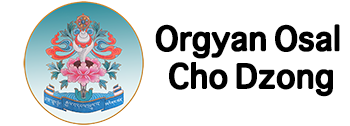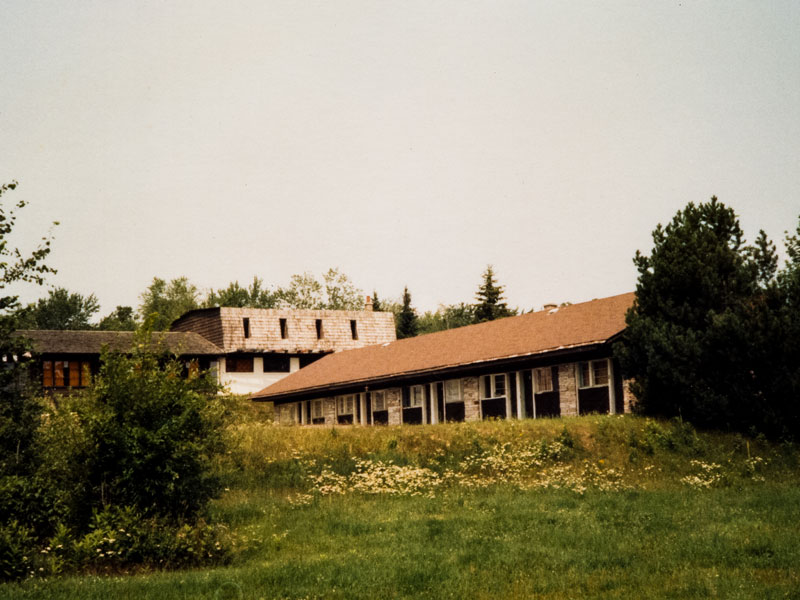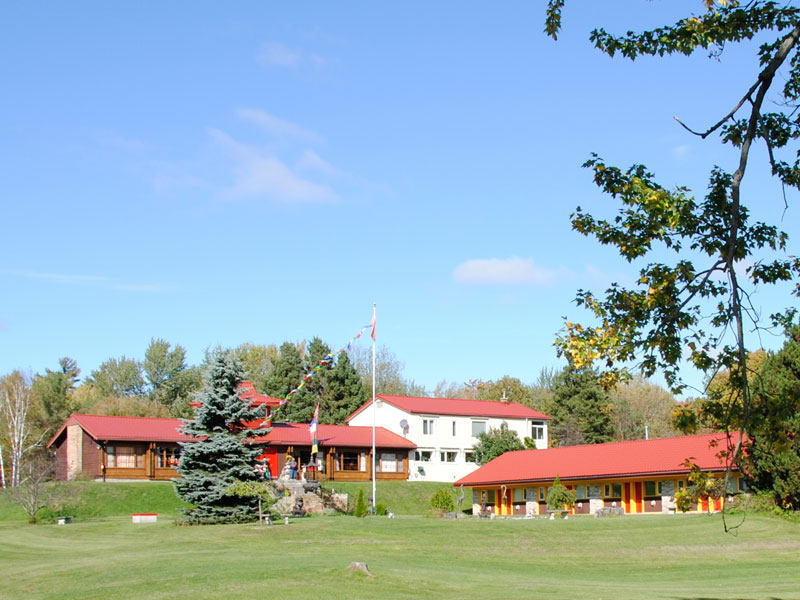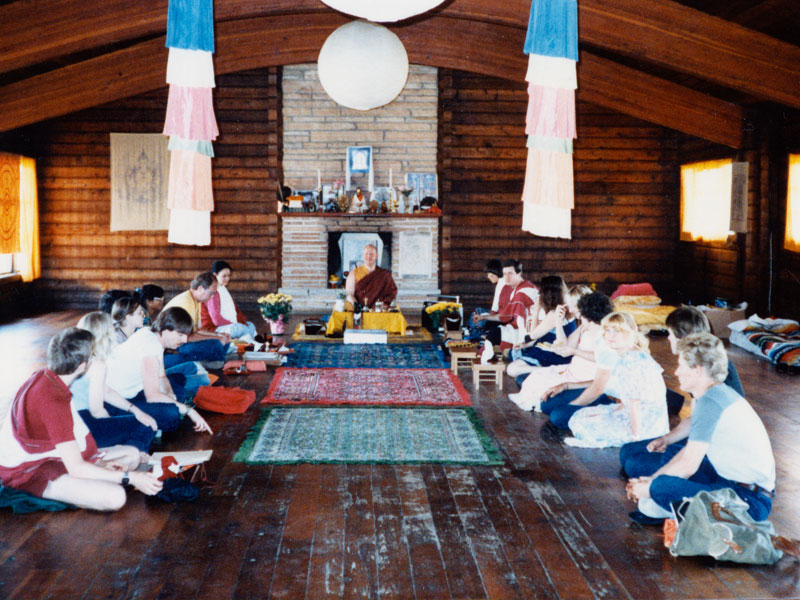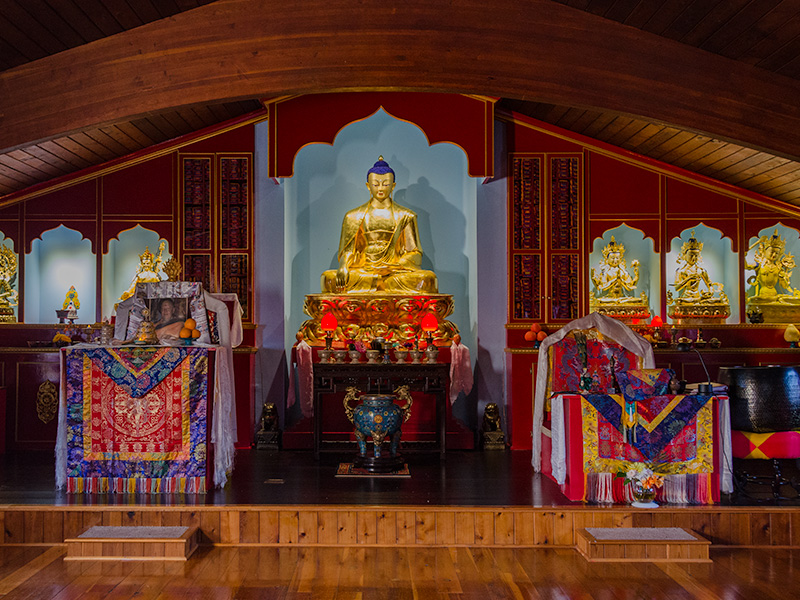ORGYAN OSAL CHO DZONG
Named after the great Nyingma saint Longchenpa’s favourite retreat centre and final resting place, Orgyan Osal Cho Dzong is a 350 acre centre for the study and practice of Nyingma Dharma. Located in southeastern Ontario near the town of Madoc, the centre is situated in the midst of an extensive forest at the foot of Mount Moriah, an ancient aboriginal power spot and south-eastern Ontario’s highest peak. The centre’s facilities include a large temple featuring a 7 foot tall Shakyamuni Buddha Statue, a 15 room retreat house and a Lama house. Orgyan Dzong was founded by Ven. Peling Tulku, Rinpoche in 1984 and blessed by His Holiness Penor Rinpoche during the transmission of the Long Chen Nying Thig in 1988. The centre is renowned for its natural beauty and an energy which is extremely conducive to Dharma practice.
The name of the centre, Orgyan Osal Cho Dzong, can be translated as The Citadel of Padmasambhava’s Clear Light Dharma. The Tibetan word Orgyan is the name of Padmasambhava’s homeland (Sanskrit: Oddiyana), which was north west of India, in present day Pakistan/Afghanistan, and signifies Padmasambhava and the Nyingma (ancient) Lineage. Osal (Sanskrit: Prabhasvara) is translated as Clear Light, the primordial enlightened nature of all beings. Cho (Sanskrit: Dharma) are the teachings of the Buddha, and Dzong is a fortress or citadel. This name is commonly abbreviated to Orgyan Dzong for convenience.
An interesting coincidence occurred when Ven. Peling Tulku Rinpoche named the centre. In Tibetan, the signifier for the “O” vowel, called ‘naro’, looks like a soaring bird, and is placed above its related consonant, thus the name of the centre, Orgyan Osal Cho Dzong, has four naro marks above it:
ཨོརྒྱན་འོད་གསལ་ཆོས་རྫོང
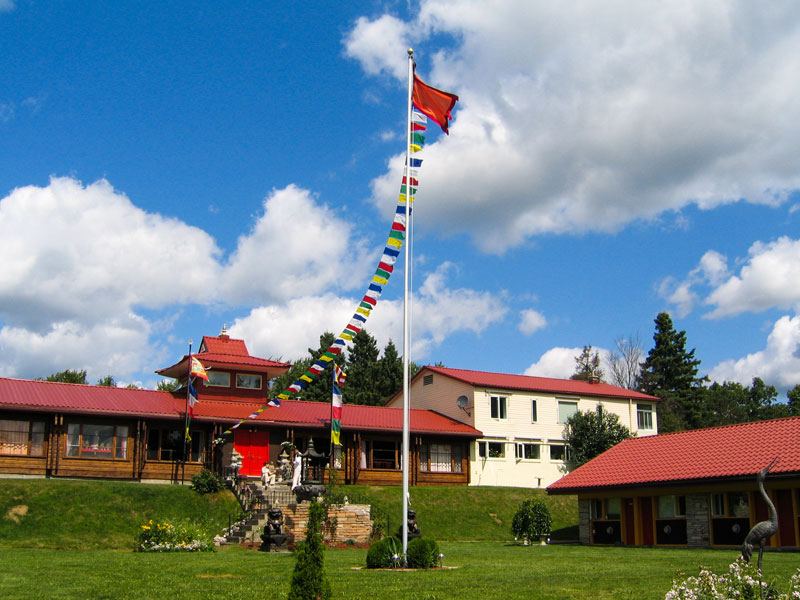
After deciding upon and announcing its name, Rinpoche went outside for a walk with some of his students, and circling in the sky above the centre were four turkey vultures, mirroring the naro marks in the centre’s name. The vulture is a powerful Vajrayana symbol of the path of tantra, as it transforms the flesh of corpses (symbolizing the minds of samsaric sentient beings, ‘dead’ with selfishness and rotten with defilements and negative karma) into the vitality and energy that allows it to soar effortlessly and unhindered in the sky (the vast, open purity of enlightened mind). Additionally, as a symbol of his attainment, Padmasambhava wears three vulture feathers on the tip of his Lotus Crown.
ORGYAN DZONG THEN AND NOW
When we purchased the property in 1984, the temple was just a large bare room with a stone fireplace in the west end that was repurposed into makeshift altar. Prior to His Holiness Penor Rinpoche’s visit in 1988 to bestow the Longchen Nyingthig, basic shrines were built which are the basis of the current ones. Over the years, decorative trim and auspicious symbol medallions were added and the cabinets were installed for the Buddhist Canon (the Kangyur and Tangyur) that HH Penor Rinpoche gave Peling Tulku Rinpoche. A raised floor for the shrine area was installed and the log walls and fireplace were drywalled over. In anticipation of the arrival of the seven-foot Buddha statue, the fireplace and chimney were demolished and a niche was constructed to enshrine it in 2011.
